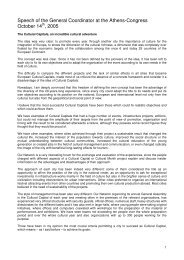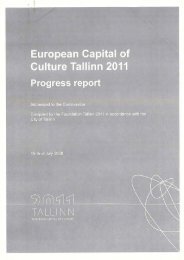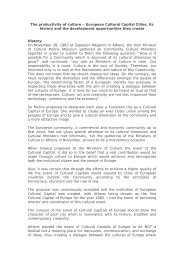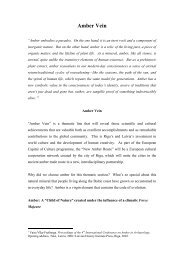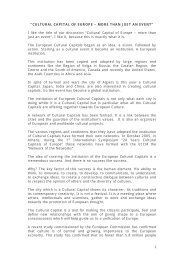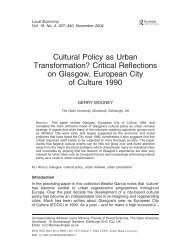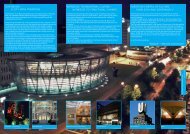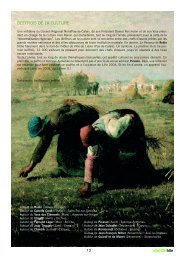Concise.pdf - Brugge Plus
Concise.pdf - Brugge Plus
Concise.pdf - Brugge Plus
- No tags were found...
You also want an ePaper? Increase the reach of your titles
YUMPU automatically turns print PDFs into web optimized ePapers that Google loves.
© ROLAND PATTEEUW<br />
Attachment+<br />
24 the finishing touches put to it even now. Conductors, musicians, singers, directors,<br />
artists and audiences are all over the moon about the excellent acoustics and the possibilities<br />
offered by the building.<br />
BRUGGE 2002<br />
In order to find out how a number of renowned contemporary architects viewed the<br />
city, the architecture association Archipel organised a cycle of lectures under the title<br />
Architects-Artists-Visionaries. The four lectures were very well attended, especially that<br />
involving Toyo Ito, which was held in the main hall of the Concertgebouw.<br />
The Masterpiece is a Flemish Government Architect (Vlaamse Bouwmeester) project<br />
aimed at enabling young artists to develop a new view of how to incorporate art into<br />
new buildings. On the occasion of 2002, Bruges was chosen as the work area. Five<br />
young artists from different disciplines each chose one site on which to work, from a<br />
list of buildings. Under the supervision of Ivo Van Hove, they produced five creative<br />
projects: a postcard project for the bathroom block on the Canal Island, a “fit-o-meter”<br />
of words and symbols at Toyo Ito’s pavilion, a newspaper with images as a “museum<br />
in progress”, a video about a horse and cart in the underground car park beneath the<br />
Concertgebouw, and a choreography in a sculpture on the Coupure bridge.<br />
A contemporary meaning for monuments and heritage<br />
The historic city centre of Bruges was declared a UNESCO world heritage site at the<br />
end of 2000. In the run-up to BRUGGE 2002 a great deal of restoration work was carried<br />
out, and buildings that underwent restoration included the municipal theatre,<br />
the Brugse Vrije, the tower of the Church of Our Lady, the reception rooms of the City<br />
Hall and the Civil Registry Office on the Burg. For the latter project, which included<br />
a remarkable restoration of the polychromy, the city of Bruges won the Flemish<br />
Monument Award, 2001.<br />
BRUGGE 2002 also hosted the official opening of the Heritage Days, 2002. This marked<br />
the start of a ten-day festival with an itinerary taking in unknown and well-known<br />
monuments, houses and gardens opened to the public, a contemporary programme<br />
entitled Music and Architecture by Champ d’Action, the young people’s project<br />
Frontsid[t]e/Back[-]side, a grand finale with plants and flowers in the city, and a festive<br />
closing event in the 150-year-old Astrid Park.<br />
In addition to the Heritage Days, BRUGGE 2002 also included two other national initiatives<br />
in its programme: the heritage weekend on April 20 th and 21 st with a series of<br />
events around the theme of “collecting” and organised by the Bruges Heritage Unit,<br />
and the first Architecture Day, organised by the Flemish Institute of Architecture,<br />
which included tours of BRUGGE 2002’s architecture projects.



